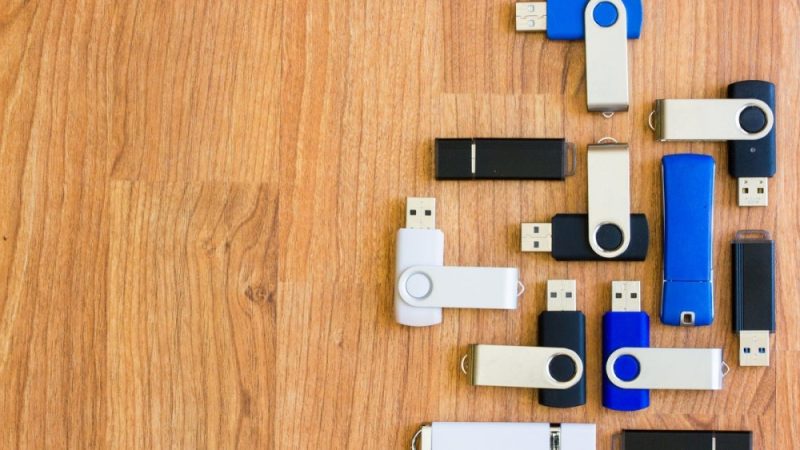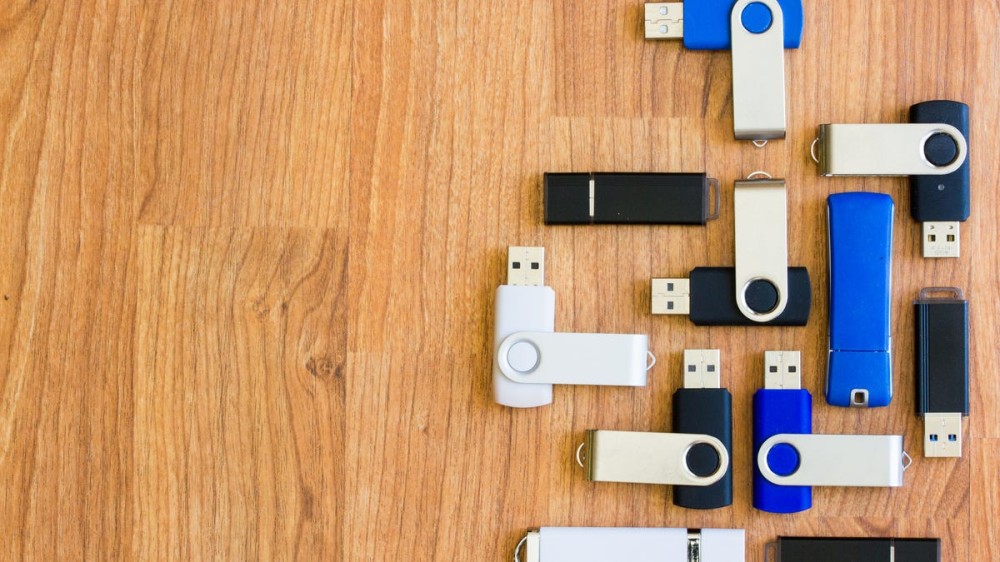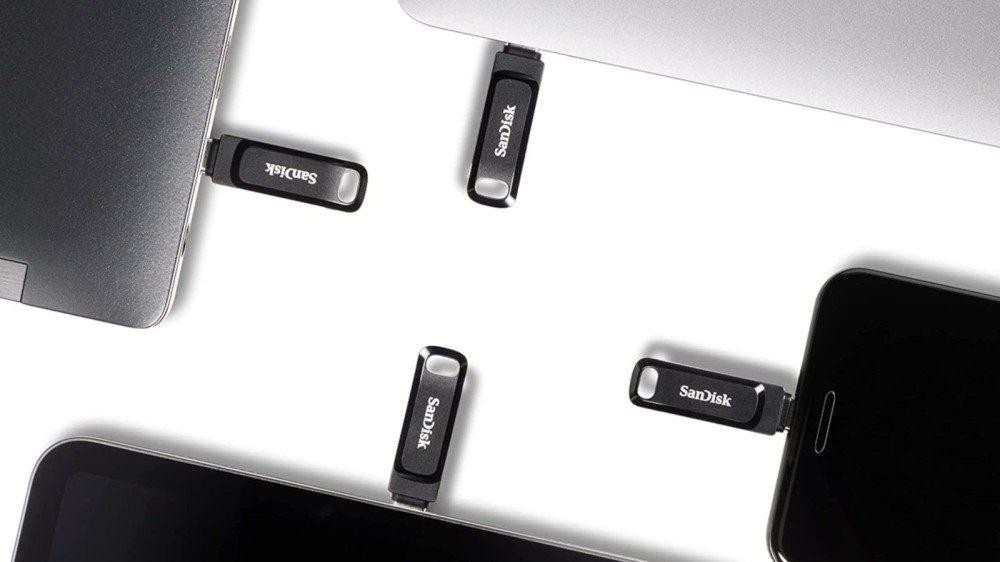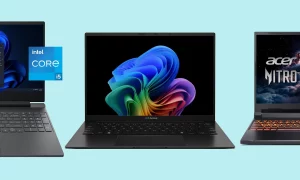The Best USB Flash Drives


Flash drives are compact devices that can store your digital files. As a digital storage option, they’re incredibly durable, portable, and cost-effective. Whether you’re looking for a more secure and tangible way of storing memorable photos or important files, a reliable method of transferring data between devices, or an on-the-go device that can back up your computer with extra gigabytes, buying a high-quality flash drive is a great choice.
Buying Guide for USB Flash Drives

Why buy a USB flash drive?
When it comes to storing and transferring files, almost nothing beats a flash drive in terms of convenience and efficiency. USB flash drives can be easily taken almost anywhere and have wide compatibility for a vast variety of USB electronic devices. They also provide better information security and privacy than cloud storage and are a great tool for those who prefer storage methods that give them something tangible to hold onto. Thankfully, USB flash drives have also gotten much more efficient and inexpensive over the years, so now you can find great deals on durable flash drives that will afford you more storage space than you’ll need.
What should you look for in a USB flash drive?
- Storage Space: USB flash drives might be tiny, but they’re capable of storing the same amount of data as many bulkier file storage options. However, an increase in storage capacity typically comes with a higher price tag. As such, those who only need to transfer a couple of images or files here and there probably won’t need a pricey 1-TB USB flash drive. However, if your file-filled computer is desperate for extra gigs, a great high-capacity flash drive can quickly become an integral hardware component that will ensure you don’t run out of storage space for your valuable files.
- Data Transfer Speed: USB devices have come a long way in terms of speed. In fact, USB 3.0 flash drives transfer data 10 times faster than USB 2.0 devices. This means that a USB 3.0 drive transfers 10 seconds’ worth of data from a USB 2.0 in just 1 second. So, if you have many GBs worth of files to transfer and don’t want the task to take all day, ensuring your flash drive is USB 3.0 compatible is a great choice.
- Size: If you plan on keeping your flash drive plugged into your computer or laptop, it can be wise to choose a drive that’s more compact. This can help prevent your flash drive from getting snagged or ripped out of your device, which is especially important when you’re transferring data. However, with smaller drives, you have a higher risk of losing or misplacing them, so if you’re looking to store important information, determine which factor is more important for your needs.
Do a USB flash drive’s read and write speeds really matter?
The answer to this question will depend on what you plan to use your flash drive for. If you’ll primarily be saving Excel or Word documents on your flash drive, read and write speed won’t be very important to you. However, if you’ll be using a high-capacity flash drive to provide 4K HD movies to your TV, then these specs will be crucial. Keep in mind that read and write speeds aren’t solely determined by the USB standard employed by your flash drive, so referencing speed tests is a great way to determine if a flash drive is capable of the speed it advertises.
Our Picks for the Best USB Flash Drives
Pros: This Samsung USB flash drive is extremely fast, sporting cutting-edge USB 3.1 technology and a speedy 400-MBps transfer rate. On top of being a secure device for your important files, it’ll offer additional physical protection with a waterproof, magnet-proof, temperature-proof, shockproof, and x-ray-proof design. The drive can also be easily affixed to a key ring for those who want to take their files with them on the go.
Cons: While this flash drive’s read speed is very good given its fairly low price point, the write speed is just average. While most people with normal file storage needs won’t be bothered by this, those who are saving many GBs of data at once will notice this flash drive running somewhat slowly and heating up.
Bottom Line: For the price, most people will really appreciate the extra attention to detail put into this flash drive. It’s definitely durable enough to justify the key ring-compatible design, and its speed won’t be an issue for the vast majority of users. However, those who routinely transfer huge chunks of data might find that investing more in a premium USB flash drive is well worth their money.
Pros: This set of Micro Center USB 3.0 flash drives features decent speed and reliable performance for a price that blows similar offerings out of the water. The flash drives are equipped with an LED indicator light while in use and come with a hard plastic cap to protect the connector from taking unwanted damage.
Cons: While these flash drives are fast enough for average usage (think saving school projects or work documents), they are by no means high-speed drives. Thus, those who have the need for speed will likely need to invest in a different offering.
Bottom Line: If you’re buying new flash drives for your children’s school needs, it’ll be hard to find something better than this product at its low price point. However, these are budget flash drives first and foremost, so don’t expect unbeatable speed or performance out of them.
Pros: This flash drive’s solid-state design provides nearly unprecedented speeds and a 1-TB storage capacity, making it an excellent choice for storing and playing HD media. Its aluminum casing feels very durable and doesn’t get too hot when under extreme use. Another key differentiator is its built-in encryption function, which helps keep your files secure.
Cons: Solid-state drives are known to be pricey, and this USB flash drive is no exception. However, given its large storage capacity and great build quality, this is to be expected. Either way, those who are looking for something basic should look elsewhere.
Bottom Line: Simply put, this is a next-level USB flash drive that is tailored toward heavy-duty use. If more budget-friendly drives have let you down when playing 4K movies on your HDTV, this flash drive can deliver the performance you desire without breaking a sweat. However, those with less data-intensive needs will find more value in a budget-friendly drive.
Pros: At less than half an inch in length, the 256-GB Samsung FIT Plus unobtrusively sits in your device’s port, saving space and reducing the risk of damage if left plugged in. (Most people with a mischievous kitten and a laptop know how inviting a flash drive can apparently be.) However, despite its compact size, its read and write speeds are as speedy as advertised, making it a great choice for a wide range of applications.
Cons: While this flash drive’s compact design is definitely a net positive, it does make it easier to lose if you won’t be keeping it in one device. Additionally, this flash drive is known to run warm but will rarely get hot, even under extreme usage.
Bottom Line: While this is not a flash drive for those prone to misplacing things, it’s one of the best set-and-forget options around. For instance, if you need music for your car or media for your TV, this flash drive possesses both the speed and design to allow you to access your data as conveniently and reliably as possible.
Pros: This two-in-one flash drive is not only equipped with a Type-C connector but also a USB Type-A head, making it easy to transfer data to a wide array of modern and older electronics. It’s also compact, great for taking on the go and even attaching to your keychain. While speed isn’t this device’s main selling point, it features a fairly quick read speed despite its low price point.
Cons: This is definitely not one of the most rugged USB flash drives on the market. While it’s suitable for average use, the hinged design doesn’t inspire confidence should the drive be put under great stress. Additionally, this flash drive’s write speeds are only passable, so don’t expect file transfer times that compete with premium flash drives.
Bottom Line: While this USB flash drive probably won’t blow you away in terms of speed, it’s still an efficient option for those who find themselves transferring data between USB-C and USB-A devices. Given how many new laptops and devices no longer support USB-A connections out of the box, this is a great tool for bridging the technology gap that many users face when transferring data.
Final Thoughts
Many people think that storage space is the only factor that matters when shopping for a USB flash drive, but those days are long gone. With high-speed USB compatibility being available on most electronic devices these days, it’s increasingly important to vet your new flash drive to ensure it can hold up to the rigors of modern technology.










